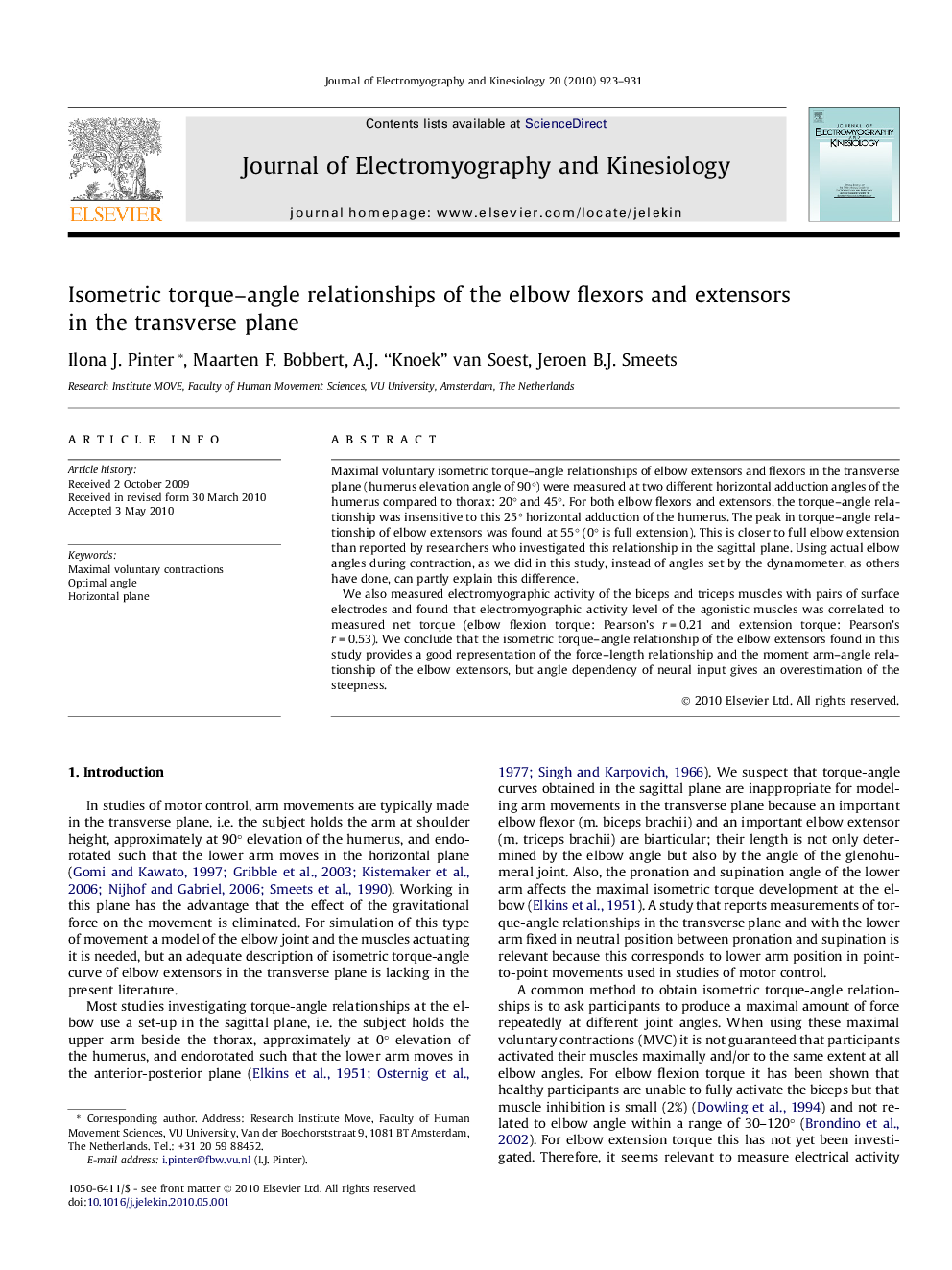| کد مقاله | کد نشریه | سال انتشار | مقاله انگلیسی | نسخه تمام متن |
|---|---|---|---|---|
| 4065135 | 1266241 | 2010 | 9 صفحه PDF | دانلود رایگان |

Maximal voluntary isometric torque–angle relationships of elbow extensors and flexors in the transverse plane (humerus elevation angle of 90°) were measured at two different horizontal adduction angles of the humerus compared to thorax: 20° and 45°. For both elbow flexors and extensors, the torque–angle relationship was insensitive to this 25° horizontal adduction of the humerus. The peak in torque–angle relationship of elbow extensors was found at 55° (0° is full extension). This is closer to full elbow extension than reported by researchers who investigated this relationship in the sagittal plane. Using actual elbow angles during contraction, as we did in this study, instead of angles set by the dynamometer, as others have done, can partly explain this difference.We also measured electromyographic activity of the biceps and triceps muscles with pairs of surface electrodes and found that electromyographic activity level of the agonistic muscles was correlated to measured net torque (elbow flexion torque: Pearson’s r = 0.21 and extension torque: Pearson’s r = 0.53). We conclude that the isometric torque–angle relationship of the elbow extensors found in this study provides a good representation of the force–length relationship and the moment arm–angle relationship of the elbow extensors, but angle dependency of neural input gives an overestimation of the steepness.
Journal: Journal of Electromyography and Kinesiology - Volume 20, Issue 5, October 2010, Pages 923–931